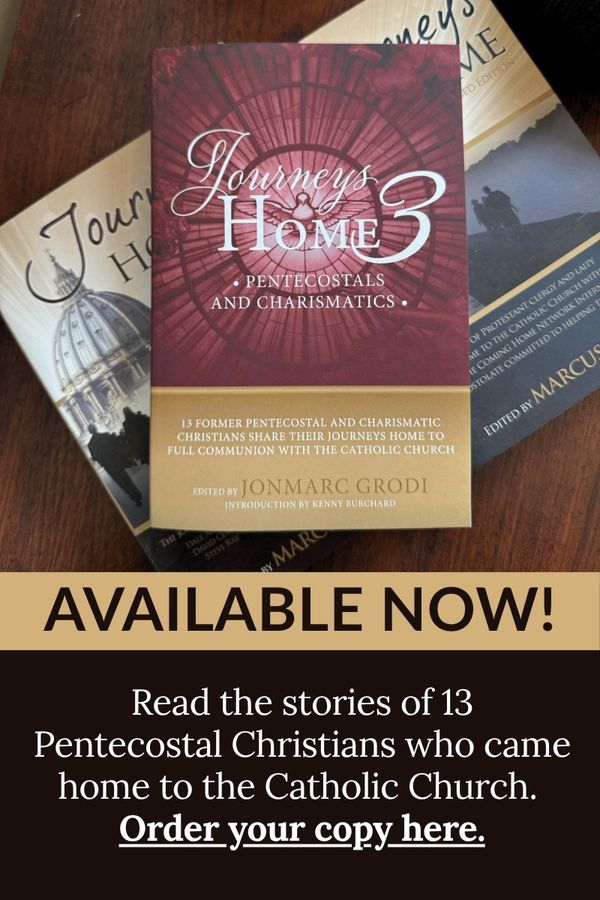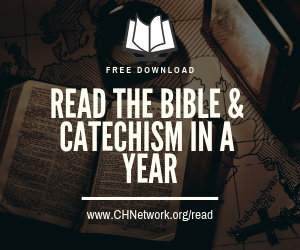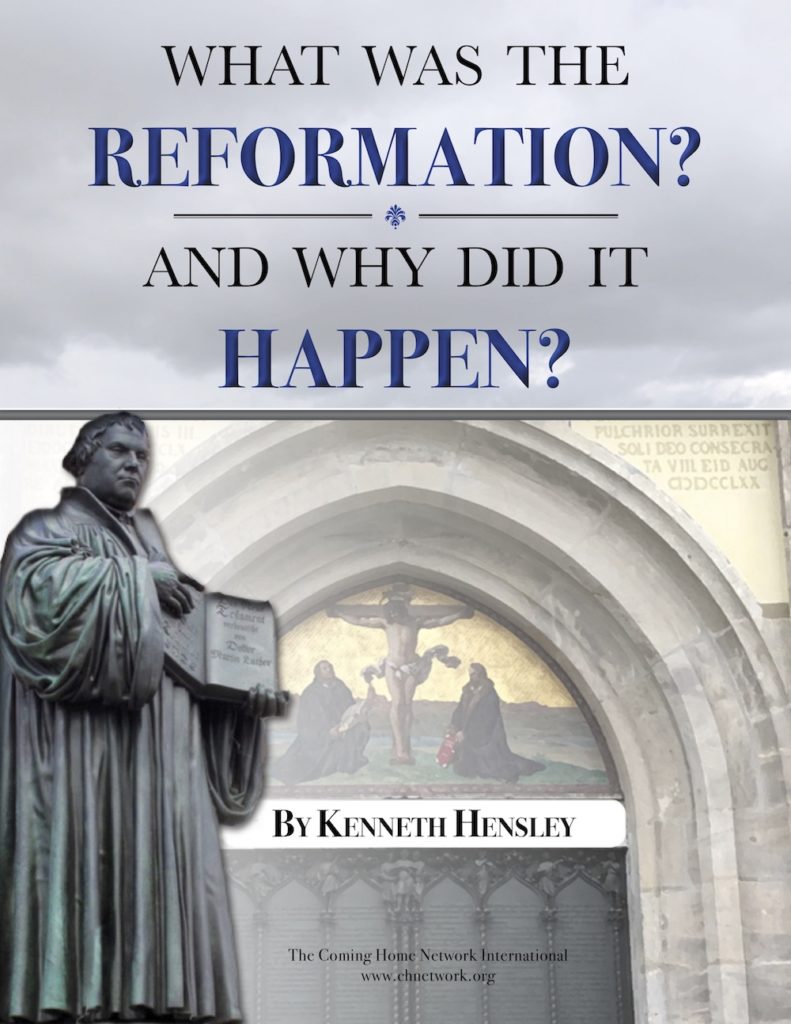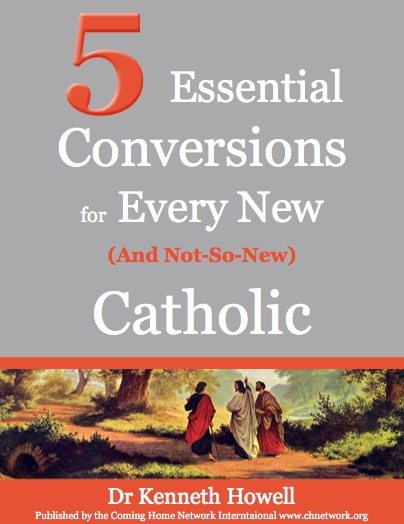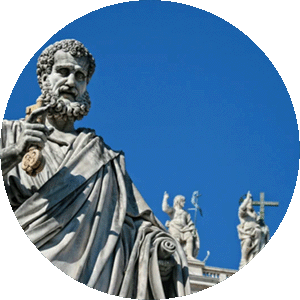
I was fortunate to be raised in a loving Christian home in Corbin, KY, about 75 miles south of Lexington. Our family attended a Southern Baptist church. When I was nine years old, I understood the basics about Jesus. I knew that He was the Son of God, that He died for my sins, and that He loved me. My parents asked me if I wanted to be baptized, and I said yes. For the next six years, I went to church each week with my family but had no relationship with Jesus and had no interest in the things of God. I didn’t get in trouble and was a good student, but I had developed a bad habit of using foul language because it seemed “cool” and helped me fit in with others. This all changed one night when I was 15.
Our church hosted a week-long revival. I had managed to stay away all week, but for some reason, I went on the last night of the revival. I don’t remember the specifics of what the preacher was saying, but I know I began to feel greatly convicted of my sins, especially the bad habits I had formed. I knew I was far from Jesus, and that I needed Him in my life. During the singing of “Have Thine Own Way,” I came forward and told the pastor that I needed to ask God to forgive me of my sins and that I wanted to rededicate my life to Christ.
That was the first of two times where God changed me in a radical way. God took away my desire to use foul language immediately, and that bad habit stopped. More importantly, He created within me a desire to get to know Him better and to read His word. I began to read the Bible daily and formed a positive habit that I have carried through my entire life. Our church had a wonderful pastor during my high school and college years; he taught me much about Jesus, the Bible, and the importance of having a personal relationship with Him. My parents were very involved in our church. Mom taught Sunday school, and Dad served as a deacon and trustee at our church for many years. I was fortunate to have grown up in a home with strong Christian parents. It was a great time in my life.
After high school, I attended the University of Kentucky in Lexington. My relationship with Christ was strong, and my daily discipline of Bible reading continued, but I was primarily just a church attender. I was not active in a local church.
My Introduction to Catholicism
When I graduated from college, I moved to Louisville, KY, where I joined a local Southern Baptist church. During my time in Louisville, I started dating Annette, a co-worker who was a cradle Catholic. I would attend Mass with her from time to time, and she occasionally would come to church with me. I had never been to a Catholic Mass before meeting her, so I had no idea what to expect. I was used to church being a more upbeat place with lively music and fiery sermons. The Catholic Mass was so different from any type of church service I had ever attended.
It wasn’t easy for us to be together and be in two separate churches. We spent a lot of time talking about this and had a long engagement period as a result. Finally, we decided that we loved each other, loved Jesus, were committed to serving Him, and believed we could navigate the two-church situation throughout our life together. It was important to Annette that we get married in the Catholic Church, and I had no objection to that. Looking back now, I realize that God gave me the grace to do that all those years ago. Annette and I were married in April 1991 at the Catholic parish she attended in Louisville. We then moved to Indiana, where we lived for four years during graduate school and our subsequent careers. After our time in Indiana, we relocated to Cookeville, TN, for my job in the spring of 1995.
Our time in Cookeville was a period of spiritual growth for me. There, I began attending a vibrant Southern Baptist church. Our pastor had a great command of Scripture, and his sermons challenged me to a deeper faith. In Cookeville, I attended an adult Sunday school class for years, was involved in several Bible studies, and sang in our church choir my last two years there. I had never felt closer to Christ in my life at that point and knew I was where I was supposed to be. By this time, our family had expanded to include two daughters and a son. Life was good, but change always seemed to be around the corner. I accepted a promotion with my employer, and we moved to Findlay, OH. I attended an Evangelical Free Church, since there were no Southern Baptist churches there. We were there for five very good years before moving back to Kentucky, returning to Lexington in 2009.
Once back in Lexington, I settled in at a large Non-denominational church. I enjoyed ten very good years there and was involved in several ministries, most notably a prayer team ministry. Throughout all these moves and church changes, Annette and our three children faithfully attended the Catholic parish. She and I attended with each other when we could make schedules work. At this point in my life, my Christian faith guided my daily life. I was far from perfect, but I considered my relationship with Jesus Christ to be the most important thing in my life. I was very happy with my life as a Non-denominational Christian and felt that my Sunday worship experience was better than Annette had in the Catholic Church. In my mind, there would never be a scenario in which I would consider becoming Catholic. Somewhat unexpectedly, my job situation changed, and we moved to West Chester, OH, a northern Cincinnati suburb, in May 2019.
I remember thinking, “Here we go again.” I would need to do research and visit several churches to find one where I liked the pastor and the music style, agreed with the Statement of Faith, etc. I settled into another Non-denominational church and was in the process of learning about potential areas of service when COVID-19 hit in March of 2020. Annette, meanwhile, had joined St. Maximilian Kolbe Catholic Church.
While churches were shut down, we watched services together most Sundays online on the couch. We would typically watch her Mass at 8:00am, and then watch my church service at 9:30am. I remember thinking that,while I could get much out of my church service sitting at home on the couch, Annette’s experience was fundamentally different. You couldn’t replicate the Mass and the Eucharist with an online service. Eventually, COVID wound down and church life slowly returned to normal as our churches re-opened.
Everything Changed
On Sunday, September 12, 2021, I attended my church by myself. My pastor preached a sermon about discipleship. He began to talk about how the early Church started and what it became after Constantine. During this time, I began feeling uneasy with his teaching and conclusions. I can’t remember specifics, but I know that I wasn’t in agreement with what he was preaching. Somewhere in that message, I experienced a life-changing moment. As clear as a bell I heard an audible voice in my head that said: “How do you know he’s right? What’s his authority?” I heard the voice and could see the word “authority” in my mind. It didn’t last long, but it was as real and as clear as anything I’ve ever experienced in my life. As time goes by, I refer to it as “the day God hit me upside the head with a baseball bat.” It sure got my attention!
That week was a whirlwind of activity. I had interpreted — rightly, I believe — the “authority” message as a challenge to answer the following question: What is my true source of authority? As a Protestant, the Bible was my sole authority, known as sola Scriptura. The Catholic Church, in contrast, teaches that authority comes from three sources: Sacred Tradition, Sacred Scripture, and the Magisterium.
I was consumed with learning all I could about the issue of authority and whether the claims of the Catholic Church were true. I began to read challenges to sola Scriptura that I had never seen before, like 2 Thessalonians 2:15, which tells us to “stand firm and hold to the traditions which you were taught by us, either by word of mouth or by letter.” All tradition wasn’t bad after all. Only man-made tradition was condemned by Jesus. I also began to realize that the canon of Scripture wasn’t settled until the late 4th century. Who settled the canon? Wasn’t it the Church? What did people do before the Bible? How could they live by the Bible alone if there was no Bible? Even when the canon was settled, the common person didn’t have access to the Bible until the printing press was invented, a relatively short time before the Reformation. Illiteracy was common. Why would God have put a system in place that only relied on the written word when most couldn’t read or have access to a Bible? Doubts began flooding in.
I remembered that Annette had a book called Rome Sweet Home by Scott Hahn and knew that he was a former Presbyterian minister who had converted to Catholicism. Finding an audio version of his conversion story on the internet, I listened to it in its entirety. It shook me greatly, because he was making sense to me, especially about the Mass — how what is happening in the Mass is what is happening in Heaven. I began reading the book and knew that I was “in trouble.”
I listened to more and more conversion stories online. Two that I listened to that week that had a great impact on me were the conversion stories of Steve Ray and Keith Nester. Both were former Protestant pastors that left their pastorates to join the Catholic Church. Their stories were incredibly compelling. They had believed like me, and now they were Catholic apologists. I finally told Annette what I had been doing throughout the week. She was surprised, though I’m sure very happy, that I was ready to consider learning about Catholicism.
The Search for Truth Intensifies
I read as many books as I could from September through December on various aspects of the faith — some focusing on apologetics, Church history, and the Church Fathers, and others presenting conversion stories like Crossing the Tiber by Steve Ray. I also discovered Marcus Grodi and The Journey Home program and watched over 100 episodes during that first couple of months. I had no idea that anyone, much less pastors, left Evangelical backgrounds to become Catholic. The cumulative effect of listening to these conversion stories had a great impact on me. Many of these people had converted because of the issue of authority, the very thing that led to my own search. I also considered the example of faith that Annette set for me during our marriage. Her faithfulness to the Catholic Church throughout our life together was beginning to increasingly resonate with me.
I also began to listen to podcasts. One of my early favorites, one that I still listen to, was The Cordial Catholic by Keith Little, a former Pentecostal in Canada who became Catholic. Most of his interviews are with Protestants who have converted, so again, I was hearing the stories of more and more people like me. During this time, I also read Evangelical is Not Enough by Thomas Howard and Catholic Christianity by Dr. Peter Kreeft. These were great books that taught me a lot.
I was very interested in Church history and learning what the first Christians after apostolic times thought, wrote, and practiced. The writings of St. Ignatius of Antioch, who was martyred around 110 AD, had a tremendous impact on me — so much so that he became my Confirmation saint. I read that he learned the faith from the Apostle John, and I discovered that he was the first to use the term Catholic when describing the Church. He wrote about the bishops, presbyters (priests), and deacons — the structure still used in the Catholic Church — and about the Eucharist being the real Body and Blood of Christ, stressing the importance of believing this. It was astounding! I was learning things I didn’t know and had never wanted to learn.
The authority of the Magisterium was starting to make more sense. I’ve always been somewhat bothered that there were so many denominations in Protestant Christianity. If the Bible was so easy to interpret and what it said was self-evident, then why were there so many interpretations? Some believed in infant baptism, and some didn’t. Some believed in “once-saved, always-saved,” some didn’t. Who was right and who was wrong? What was essential and what wasn’t? I had always assumed that my interpretation was correct, and others were wrong — but based on what? They must think the same thing, right? I began asking myself questions I had never asked before, and I wasn’t liking the answers I found.
As a Protestant, our pastor was our primary authority aside from the Bible. There are many good pastors who are sincere but disagree on biblical interpretation. How could we know our pastor is correct — on what authority? The same Bible that others read and interpreted differently? Things I had always assumed to be right were now being called into question. During all my time with Annette, I had never fully questioned these matters. I had done some research, but I was usually just looking to confirm that I was right. Based on the Protestant sources I had read and listened to over the years, that was easy to do. Until now, I had never read a Catholic source about Catholic teaching.
My understanding of the Christianity timeline was something like this:
Apostolic times — > Protestant Reformation — > Today
Growing up in Sunday school classes, I learned nothing about Christian history other than what was in the Bible. I assumed that the early Church had come off the rails, fell into error, and Martin Luther saved Christianity. However, if Jesus promised that the gates of Hell wouldn’t prevail against the Church (Matthew 16:18), would God have let the Church fall into heresy for 1,500 years? What about all those people that lived during those times? Were they all lost and in Hell? They lived much closer to the time of Jesus than we do. What made us right and them wrong?
The Scales Fall From My Eyes
Amid this, I went to my first Eucharistic Adoration with Annette. It was exceptionally reverent and special for me. I was beginning to consider the possibility that I might believe in the Real Presence of Christ in the Eucharist, something I never had done before. I had never considered a literal reading of John 6, but now I could see how that could change everything.
It quickly came to the point where I needed to give my full attention to this issue. I decided to only go to Mass with Annette and no longer attend my Non-denominational church — at least until I got my questions answered. I had stopped kneeling during the consecration years ago in Mass with Annette and had never in my life genuflected before sitting down. Now, however, when I attended Mass, I began to genuflect before sitting, as I recognized that Christ could truly be present in the tabernacle. I knelt during the consecration and was having a hard time holding back the tears. I felt a bit like Paul on the road to Damascus, with something like scales falling from my eyes. That morning was a pivotal turning point to accelerate my conversion. I began to see the Catholic Mass as true worship and began to view what I had called worship in my various churches over the years as something different. It felt like God was re-programming my mind and my heart in short order. I couldn’t believe what was happening. Part of me thought things were happening way too fast, while another part of me was ready to dive into the Catholic Church head first.
Annette and I were now going to the chapel weekly for Eucharistic Adoration. I also started going to Mass during the week over my lunch hour. Even though I couldn’t receive the Eucharist, I was drawn to attend Mass as often as I could get there. I wrote the following in my journal: “To me, the issue is still all about authority. If the Catholic Church (Magisterium), along with Scripture and Tradition, is the true authority, then my doctrinal concerns about salvation, Mary, the Pope, purgatory, etc., are irrelevant. If that is the true authority, it doesn’t matter what I believe. I must conform my will to that of the authority.”
I decided to start RCIA (the process to inquire about joining the Catholic Church) and asked Annette to be my sponsor. The night of my first RCIA class, we had a Eucharistic Exposition service in the church, where the Eucharist is displayed in a case called a monstrance. I had never attended anything like it in my life. It was more worshipful than any other type of service I’ve witnessed. Others may have been more emotional and moving, but not more filled with authentic worship.
While all this was going on, I was still working through my issues about the pope, Mary, and purgatory among others. I had never understood or believed any of these teachings. During this part of the process, I began to understand and appreciate that there was biblical evidence for key Catholic teachings: Apostolic Succession, the Sacraments (the Eucharist, Confession, etc.), the pope, Mary as the Mother of God and the Ark of the Covenant, etc. Though I may have interpreted many of the verses differently as a Protestant, I could see the arguments and reasoning behind the Church’s teaching. I loved my life as a Protestant Christian but was feeling a strong pull to become Catholic.
Through my observations in the last 30+ years, it seemed as if Catholics worshipped Mary. This may have been my biggest hurdle to becoming Catholic. It was during this time that I learned the terms “latria,” “dulia,” and “hyperdulia.” Latria is true worship and adoration. Latria is due to God and God (the Creator) alone. Dulia is honor and veneration given to saints (creatures). Hyperdulia is extra dulia that is due to Mary, the greatest saint, but it is not worship or adoration. Learning that distinction helped me to better understand that Catholic teaching doesn’t place Mary on the same level as the Holy Trinity.
Since I was beginning to submit to the authority of the Church, I began to accept on faith that these things were true, even though I still had many questions about them. A quote from one of the people I listened to along the way helped me here. Kenny Burchard was a former Pentecostal pastor who became Catholic. In a Cordial Catholic podcast episode, he expressed it this way: “I stand under the authority of the Church until I understand what the Church teaches and what it means by what it teaches.” That is exactly how I felt.
I can summarize my journey with these three words: Authority, Adoration, and Assent. I was convicted on the issue of authority, began feeling the pull in my heart during adoration, and finally assented to the authority of the Church. In one way, it seemed to be going very fast. In another way, it seemed that it had been part of a 30+ year journey. Eventually, it became an issue of obedience. God had clearly called me to join the Catholic Church, and failure to do so was putting my will above God’s will. I could no longer do that, and I knew that I had become Catholic in my heart.
At this point, I began to tell family and friends about my decision to enter the Catholic Church. Most were supportive but didn’t really understand. Some still struggle with my decision and may always do so. I pray I get the chance to have a more in-depth conversation with many of them about the “why” of my conversion. I am so grateful for my life as a Protestant. That is when I learned to love Scripture, love Jesus, and developed an ongoing, personal relationship with Him.
Life as a Catholic
On February 1, 2022, I had my first confession with our parish priest. I met with him for over an hour. I had prepared for weeks and had lots of notes. It was a humbling experience and hard to discuss all my sins in detail to another human. I didn’t feel any fireworks or any different when I left him. However, I did notice a few days later that my soul felt lighter, and when I thought of some of the things I had confessed, I didn’t have the same feeling of guilt or shame that I did before. It was truly a grace that I received from the sacrament.
My Confirmation was on May 15, 2022. In just eight months I had gone from being a very happy Evangelical to a confirmed Catholic. It was only through a miracle of God that this could happen. Annette and I walked up for the Rite of Confirmation. I was calm, stated that I believed all that the Holy Catholic Church believes, teaches, and proclaims, and was anointed with oil by our priest. I knew something of great importance had just happened.
My life as a Catholic has been nothing short of amazing. Annette and I are serving in the Church together for the first time in our married life. We have walked with three couples preparing for the Sacrament of Marriage as marriage mentors. We’ve taken instructional classes to learn more about our Catholic faith. Annette and I both serve on ministry committees at our parish. We’ve developed a community of Catholic friends.
For most of my life, I felt I needed the excitement and energy that comes from most Evangelical worship services, from the time you walk in the door before the service to the time it ends. Now, I’m much more drawn to the peace and tranquility of kneeling before Christ in the tabernacle in a spirit of prayer before Mass. I attend daily Mass at a neighboring parish most days before work and love starting my day in the silence, preparing for the Mass, and receiving the Eucharist.
One of the biggest surprises to me was the love and appreciation I have for the Sacrament of Reconciliation. I could never understand why I needed to confess to a priest when I could confess directly to God. When I read John 20:21–23 without my Protestant filter, I understood the biblical support for the sacrament. Now, as a Catholic, I have been blessed to be able to participate in this sacrament frequently.
I’ve learned to love things I never thought I could love. Saying a memorized prayer was not something I did; it almost felt wrong to me as “vain repetition.” Now, I love and appreciate many of the great Catholic prayers, especially the Anima Christi prayer, the Liturgy of the Hours, the majestic Te Deum, and even the Rosary, which had been a major stumbling block for me. I still say personal prayers as I always have, but these Catholic prayers have added so much to my prayer life that I didn’t have before.
Just under four years ago, I would have never imagined a scenario where I became Catholic. Now, I can’t imagine my life without my Catholic faith. I’ve come to know the truth, beauty, and goodness of the one, holy, catholic, and apostolic Church.
Praise be to God!

